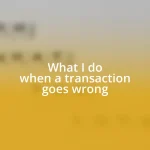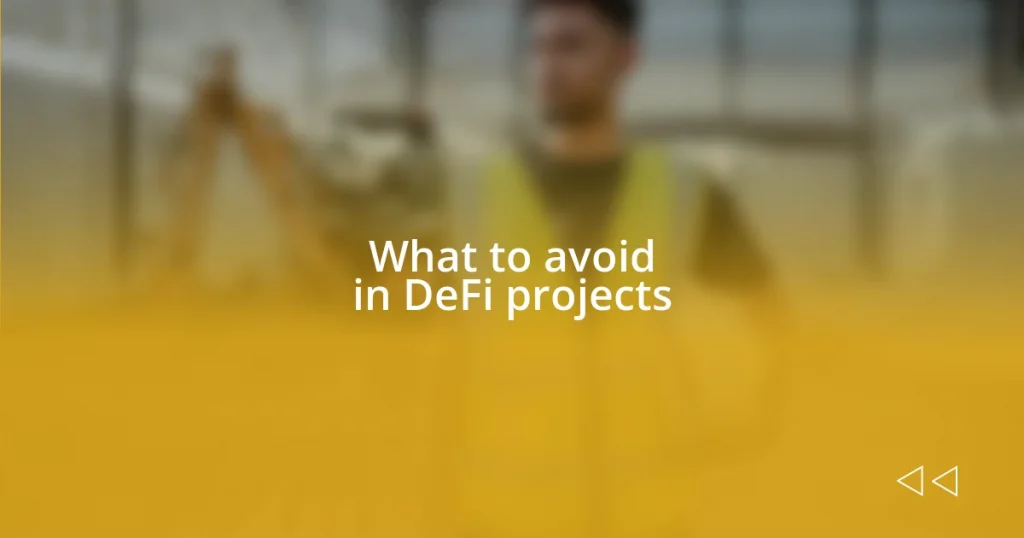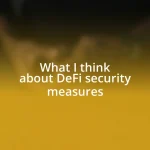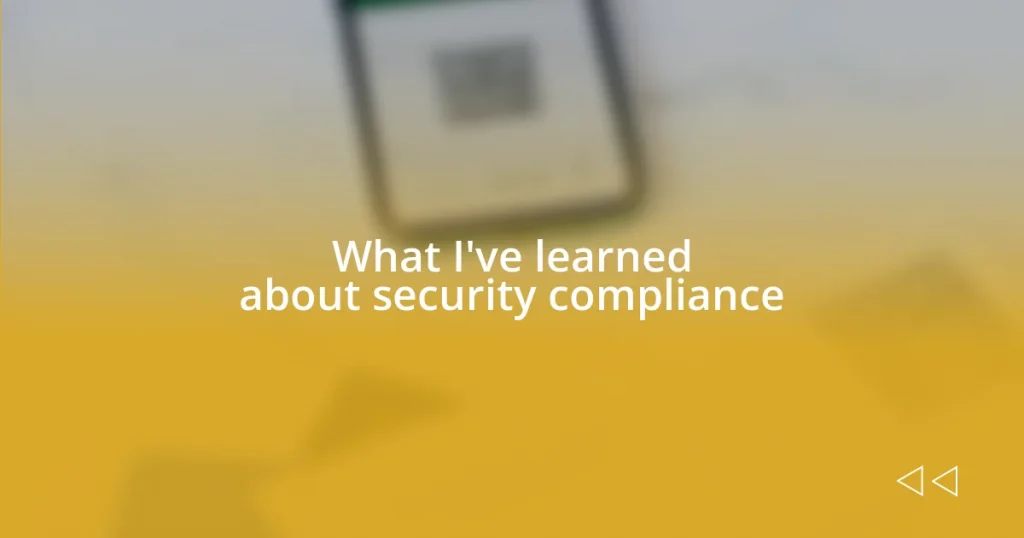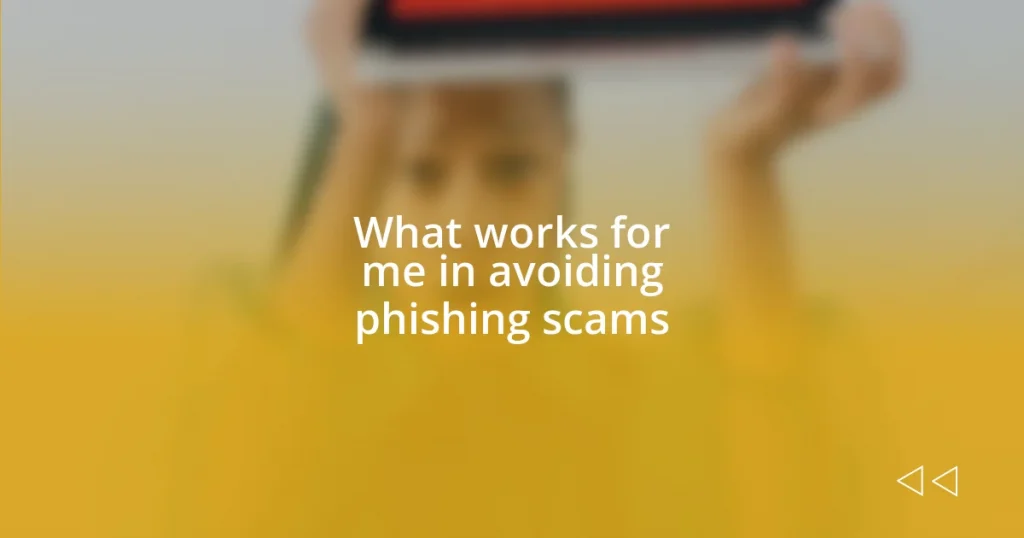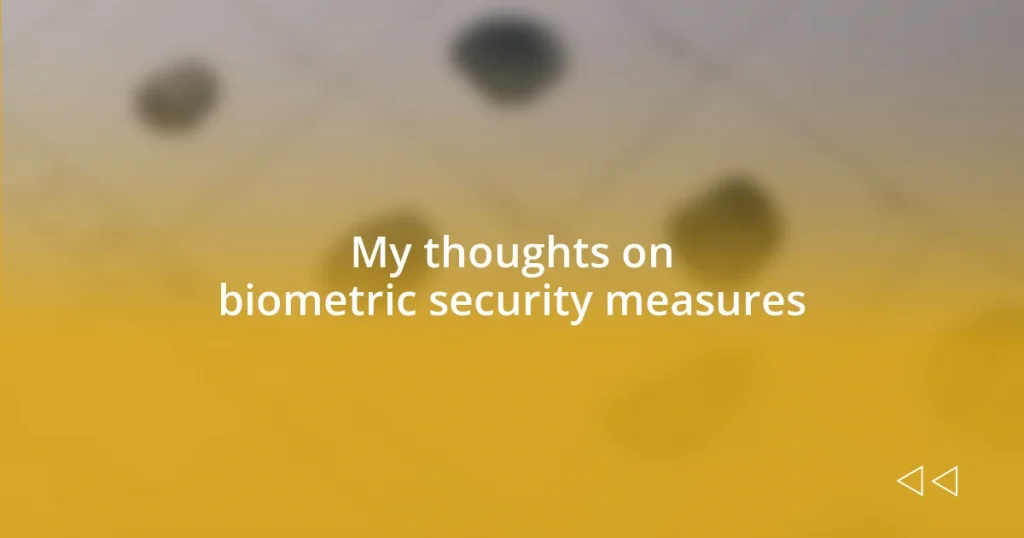Key takeaways:
- Understand the risks of DeFi investing, including vulnerabilities in smart contracts, market volatility, and the potential for loss due to untrustworthy projects.
- Recognize common pitfalls like rug pulls, complex governance, and liquidity issues to avoid significant financial losses.
- Ensure transparency in DeFi projects through verified team credentials, clear roadmaps, and straightforward tokenomics to build trust and safeguard investments.

Understanding DeFi project risks
Understanding the risks in DeFi projects can be daunting, yet it’s essential for making informed decisions. For instance, I remember the first time I explored a new DeFi platform. I was excited and hopeful, but when I started digging deeper, I uncovered vulnerabilities that left me feeling uneasy. It’s crucial to recognize that not all projects are created equal; many lack transparency and can quickly turn from promising to perilous.
Navigating the world of DeFi often feels like walking a tightrope. One misstep, like investing in a poorly audited smart contract, can lead to significant losses. Have you ever thought about the security implications of the code behind these platforms? I’ve seen firsthand how overlooked audits can lead to devastating hacks, reminding me that diligence should always accompany curiosity in this space.
Market volatility is another critical risk to consider. Picture investing in a token that seems to be climbing steadily only to plummet without warning. I once experienced this gut-wrenching roller coaster and realized that emotions can cloud our judgment during such events. That’s why it’s vital to approach investments with a clear mind and a thorough understanding of the potential pitfalls.
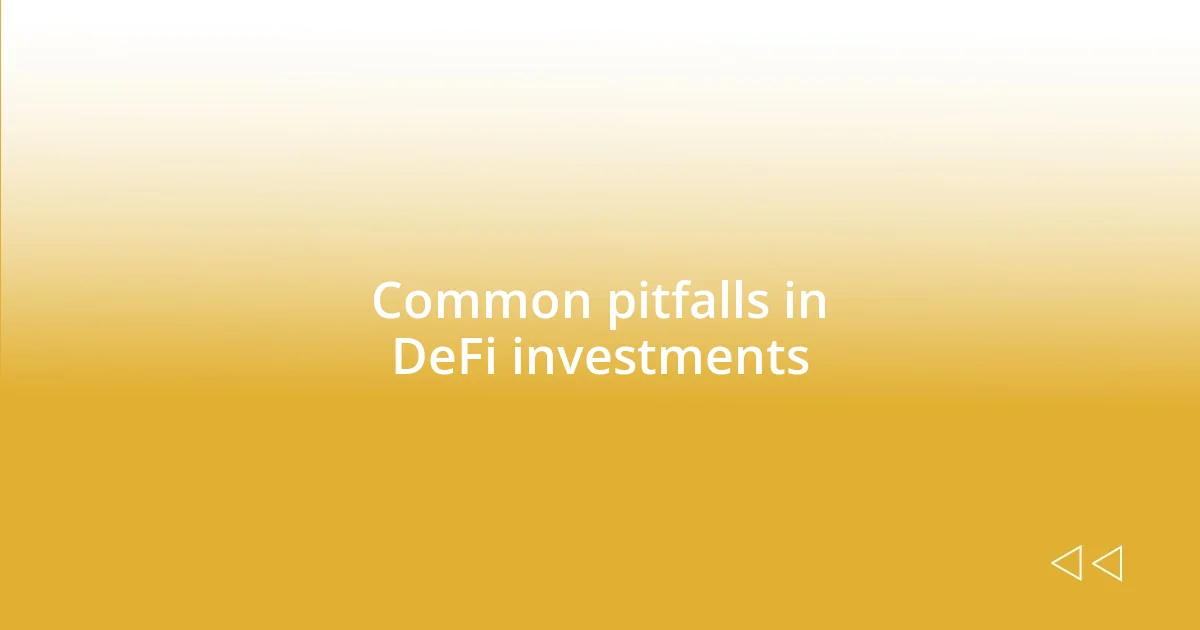
Common pitfalls in DeFi investments
Investing in DeFi projects can be thrilling, yet there are common pitfalls that can catch even seasoned investors off guard. One significant issue I’ve encountered is the phenomenon of rug pulls. It’s disheartening when a project I had high hopes for vanishes overnight, taking my investment with it. This kind of betrayal happens when developers abandon a project after attracting investors’ funds, leaving participants empty-handed. Knowing how to identify early warning signals can make all the difference.
Another pitfall often overlooked is the complexity of decentralized governance. I remember getting involved in a project that promised community voting but ultimately found that few people participated in crucial decisions. It felt frustrating to watch the project’s direction be determined by a small group. This experience taught me that while DeFi promotes decentralization, it can sometimes lead to inaction when community engagement is lacking.
Finally, one should always be cautious about liquidity issues. I once invested in a token that appeared robust but had low trading volume. When I needed to sell, I faced slippage that substantially reduced my gains. It was a stark reminder of how liquidity can directly impact the success of investments in this ever-shifting landscape.
| Pitfall | Description |
|---|---|
| Rug Pull | Developers abandon the project, taking funds with them. |
| Complex Governance | Lack of community engagement leads to poor decision-making. |
| Liquidity Issues | Low trading volume causes difficulties in selling assets. |

Lack of transparency in projects
Diving into a DeFi project can be exciting, but a distinct lack of transparency can quickly turn that excitement into apprehension. I still vividly recall a project I was enthusiastic about, only to find the development team’s anonymity a major red flag as I probed deeper. It felt unsettling to invest in something shrouded in mystery; without clear communication or transparency about their operations, I couldn’t fully trust where my funds would go.
When assessing DeFi projects, keep an eye out for these warning signs that indicate a lack of transparency:
- Anonymous Team: If you can’t find information about the team behind the project, it’s crucial to ask why.
- Vague Roadmap: A project without a detailed and clear roadmap may not have a defined direction.
- Limited Communication: If updates are infrequent or lacking substance, it might suggest they’re not forthcoming.
- Unclear Tokenomics: Transparency about token distribution and use is vital; a project that glosses over this is cause for concern.
Trusting a project requires more than a leap of faith; it demands thorough investigation. I once experienced the sinking feeling of watching my investment dwindle due to an unclear financial structure that left me puzzled. Transparency isn’t just a luxury; it’s a necessity in this complex space, guiding us to make informed choices.

Absence of a solid roadmap
A well-defined roadmap serves as a guiding star for any DeFi project, and without one, uncertainty looms. I remember getting involved with a project that boasted big ideas but lacked a concrete roadmap. It felt like sailing a ship without a destination; the developers spoke about future features and upgrades, but without specific timelines, it left me wondering whether their promises were merely hot air. How could I possibly gauge their progress when I had no clear markers to look out for?
When you stumble upon a project that doesn’t offer a detailed roadmap, it raises immediate red flags. I once had my heart set on a DeFi initiative that presented a fancy white paper but then left potential investors in the dark about critical milestones. This absence of direction made me uneasy. It’s vital to consider: How can a project build trust when it can’t demonstrate a clear, actionable plan? The unpredictability can be unsettling, making it hard to gauge whether it’s worth investing your time and money.
Another aspect I’ve noticed is how a lack of a solid roadmap can lead to project stagnation. I was part of one such community where the excitement quickly faded as developers failed to outline their next steps. Members began to lose interest, and soon the once-bustling forums became quiet. It struck me that, without a roadmap, even the best ideas could fade into obscurity. Engaging with a project feels far more reassuring when there’s a clear path forward, keeping both the team and the community motivated and involved.

Poor community engagement issues
Community engagement in DeFi projects is essential, but I’ve seen firsthand how poor engagement can lead to disillusionment. There was a project I initially found captivating, but as I followed their forums, I realized the team rarely interacted with their supporters. It felt like being at a concert where the band played their hits but never acknowledged or connected with the audience. When community members are left unheard, motivation dwindles, and you can almost feel the excitement fizzle away.
I’ve also been part of communities where the developers promised to implement community feedback, only for it to never materialize. I distinctly remember suggesting an idea to improve features, but the response was crickets. It left me frustrated and questioning: if the developers aren’t keen to listen, how can we trust their vision? Engaging with the community is vital; it’s not just about building a platform but fostering a vibrant ecosystem where every voice matters.
Moreover, poor community engagement can create a sense of isolation among investors. In another project, I observed community members struggling with similar concerns, but the lack of guidance or even reassurance from the team made people feel adrift. The once-boisterous chats turned to whispers of doubt. Wouldn’t you agree that involvement and communication can make the difference between a thriving project and one that flounders? In my experience, projects that prioritize their communities tend to flourish, while others become distant memories as they lose that crucial human connection.

Unverified team credentials
Unverified team credentials
When diving into a DeFi project, it’s crucial to scrutinize the team behind it. I recall an instance when I was drawn to a promising project, only to find that the team members had little to no verifiable experience in the blockchain space. It felt like going on an adventure with a guide who couldn’t even navigate a map; the lack of credibility left me feeling uneasy. How could I trust their decisions and vision when I couldn’t even track their professional history?
In my experience, unverified credentials can lead to more than just mistrust; they can pave the way for potential fraud. I remember a project that had slick marketing but vanished without a trace, seemingly overnight. The team members had disappeared from social media, and their expertise turned out to be as imaginary as the project itself. This incident reinforced my belief that investing without due diligence is like setting sail on a stormy sea without a life jacket. It’s essential to ask yourself: if a team isn’t open about their backgrounds, what else might they be hiding?
Moreover, the emotional toll of investing in projects with unverified teams can be significant. I watched friends lose money in a project supported by anonymous developers, leaving them with nothing but regret and anger. The fear of missing out had blinded them to the importance of transparency. I often wonder if it’s worth risking your financial future on a venture led by individuals whose credentials seem like shadows rather than solid ground. Having a reliable team not only strengthens a project but also instills confidence in the community, creating a foundation where both trust and success can flourish.

Red flags in tokenomics
When examining tokenomics in a DeFi project, one glaring red flag is the presence of an overly complicated or unclear distribution model. I remember researching a project that presented a token allocation chart that looked more like a convoluted maze than a straightforward plan. It was confusing! How could the average investor possibly navigate such complexity? If the team isn’t transparent about how tokens are distributed or allocated, it raises serious questions about their intentions and commitment to their community.
Another critical warning sign is the use of excessive rewards for early investors or developers, often at the expense of regular users. In a project I followed closely, early backers received an overwhelming percentage of the token supply, leaving little for future investors. It felt like a rigged lottery where only a select few would win. This strategic imbalance not only jeopardizes fair value but also signals a lack of faith in the project’s long-term vision. If key stakeholders are lining their pockets disproportionately, isn’t it reasonable to wonder who truly benefits from the project?
Lastly, one must be wary of projects that lack a clear use case or utility for their tokens. I recall coming across a project that issued tokens just to raise funds without clear explanations of how those tokens would be used within their ecosystem. It was as if they were throwing darts in the dark, hoping to hit a target. This ambiguity often leads to speculation rather than sustainable growth, making it hard for investors to understand the project’s purpose. I’ve learned that if a token doesn’t serve a clear function, is it really worth your investment? Tokenomics should empower and create genuine value, not just serve as a vehicle for hype.





